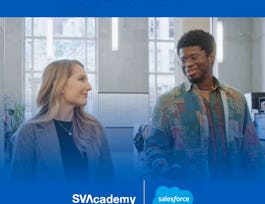Global Marketing: Iconic Brands uses the cultural frameworks introduced in Global marketing: Cultural Frameworks to guide the process of crafting a culturally focused marketing plan for a global expansion. The course introduces the key steps for developing a global marketing plan, starting with an environmental analysis of the new markets to be developed, which provides insights into the cultural preferences of target consumers in these new markets.



Global Marketing: Building Iconic Brands
This course is part of Global Challenges in Business Specialization

Instructor: Carlos J. Torelli
11,257 already enrolled
Included with
(101 reviews)
Skills you'll gain
Details to know

Add to your LinkedIn profile
21 quizzes
See how employees at top companies are mastering in-demand skills

Build your subject-matter expertise
- Learn new concepts from industry experts
- Gain a foundational understanding of a subject or tool
- Develop job-relevant skills with hands-on projects
- Earn a shareable career certificate


Earn a career certificate
Add this credential to your LinkedIn profile, resume, or CV
Share it on social media and in your performance review

There are 5 modules in this course
You will become familiar with the course, your classmates, and our learning environment. The orientation will also help you obtain the technical skills required for the course.
What's included
4 videos4 readings1 discussion prompt
This module defines global marketing and identifies the key activities when attempting a global expansion. With globalization, it is increasingly difficult for companies to cope with the complex challenges discussed in Global Challenges: Cultural Frameworks. This module introduces a framework to analyze the issues involved in a global expansion. The module reviews in detail how to conduct an environmental analysis, the steps to estimate the size of a new market, and the changes in consumer behavior induced by cultural characteristics in a new market.
What's included
6 videos3 readings5 quizzes
Once the marketer has fully analyzed the new market, assessed the size of the market, and learned the cultural insights about consumers in the new market, the next step in a global expansion is to assess the extent to which the brand is well suited to appeal to the new target market. This requires a thorough understanding of the brand, its portfolio of products and services, and the distinctive associations that contribute to its equity, and in particular to its cultural equity. This knowledge is gained by conducting a brand audit. This module focuses on brands are knowledge structures represented in consumers’ memory and introduces a framework to describe the different types of brand knowledge, as well as to identify the types of knowledge that are distinctive and relevant, and hence contribute to the equity of the brand. Special attention is paid to the brand’s cultural meanings that elicit distinctive and favorable consumer responses—or to the brand’s cultural equity.
What's included
6 videos3 readings5 quizzes
Once a marketer has gained a deep understanding of the focal brand and the cultural nuances of consumers in the new market, the next step is to leverage these insights for developing a culturally focused marketing plan. This module highlights the importance of incorporating culture into marketing decisions by reviewing consumers’ responses to the cultural meanings in brands. The premise that consumers respond more favorably to brands imbued with cultural meanings guides the first step in preparing a culturally focused marketing plan, which is developing a cultural positioning for the brand. Once a cultural positioning has been clearly articulated, the marketer can identify cultural elements to be incorporated into the brand identity. This is typically the first step in developing the marketing tactics of product, promotion, place, and price (or the 4 P’s) to be deployed in the new market.
What's included
8 videos3 readings6 quizzes1 peer review
Companies devise marketing tactics to penetrate a new market in the context of what their current marketing strategy is. Although the processes described in past modules partially incorporate the company’s current marketing strategy (i.e., by taking into account the equity of the target brand, an outcome of the overall marketing strategy, or by considering how the brand associations fit into the new market), a company that is already operating in its home market, as well as possibly in other markets, has a portfolio of ongoing marketing tactics. This module discusses the most common approaches to integrate these ongoing tactics with those needed to culturally resonate with consumers in a new market. Specifically, this module reviews the steps that a company should take to integrate actions in different markets under a unified global marketing plan. It focuses on the two competing approaches of standardization of the marketing mix versus cultural adaptation of parts or the entire marketing mix.
What's included
6 videos3 readings5 quizzes
Instructor

Offered by
Recommended if you're interested in Leadership and Management

University of Illinois Urbana-Champaign
Build toward a degree
This course is part of the following degree program(s) offered by University of Illinois Urbana-Champaign. If you are admitted and enroll, your completed coursework may count toward your degree learning and your progress can transfer with you.¹
Why people choose Coursera for their career




Learner reviews
Showing 3 of 101
101 reviews
- 5 stars
80.39%
- 4 stars
17.64%
- 3 stars
1.96%
- 2 stars
0%
- 1 star
0%
New to Leadership and Management? Start here.

Open new doors with Coursera Plus
Unlimited access to 7,000+ world-class courses, hands-on projects, and job-ready certificate programs - all included in your subscription
Advance your career with an online degree
Earn a degree from world-class universities - 100% online
Join over 3,400 global companies that choose Coursera for Business
Upskill your employees to excel in the digital economy
Frequently asked questions
Access to lectures and assignments depends on your type of enrollment. If you take a course in audit mode, you will be able to see most course materials for free. To access graded assignments and to earn a Certificate, you will need to purchase the Certificate experience, during or after your audit. If you don't see the audit option:
The course may not offer an audit option. You can try a Free Trial instead, or apply for Financial Aid.
The course may offer 'Full Course, No Certificate' instead. This option lets you see all course materials, submit required assessments, and get a final grade. This also means that you will not be able to purchase a Certificate experience.
When you enroll in the course, you get access to all of the courses in the Specialization, and you earn a certificate when you complete the work. Your electronic Certificate will be added to your Accomplishments page - from there, you can print your Certificate or add it to your LinkedIn profile. If you only want to read and view the course content, you can audit the course for free.
If you subscribed, you get a 7-day free trial during which you can cancel at no penalty. After that, we don’t give refunds, but you can cancel your subscription at any time. See our full refund policy.




